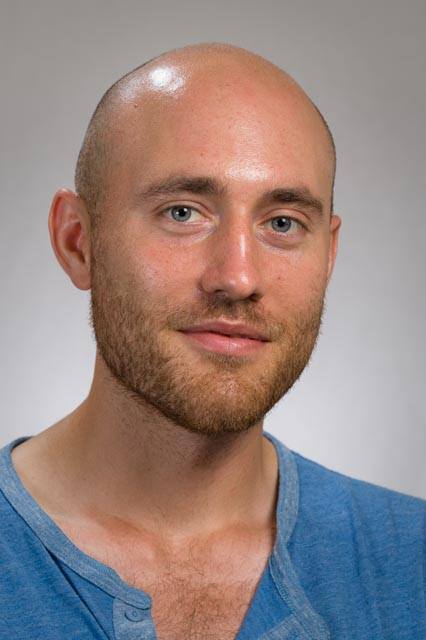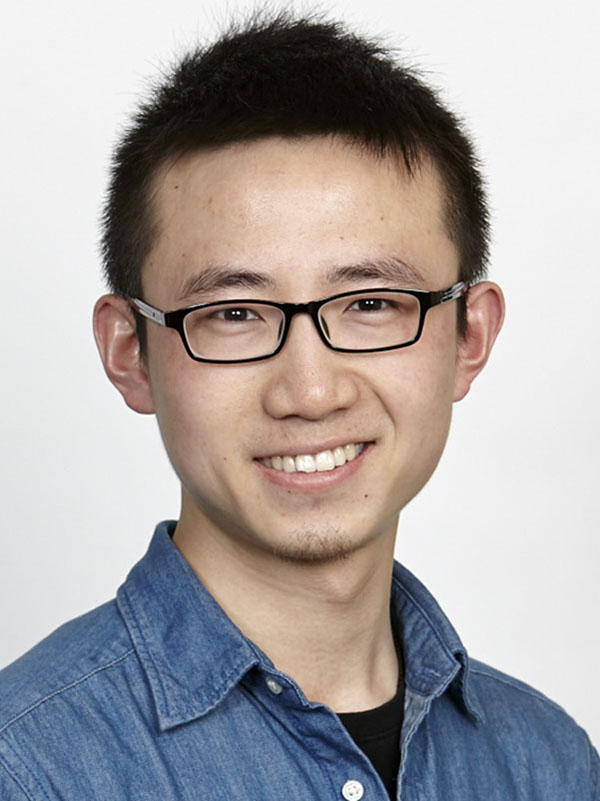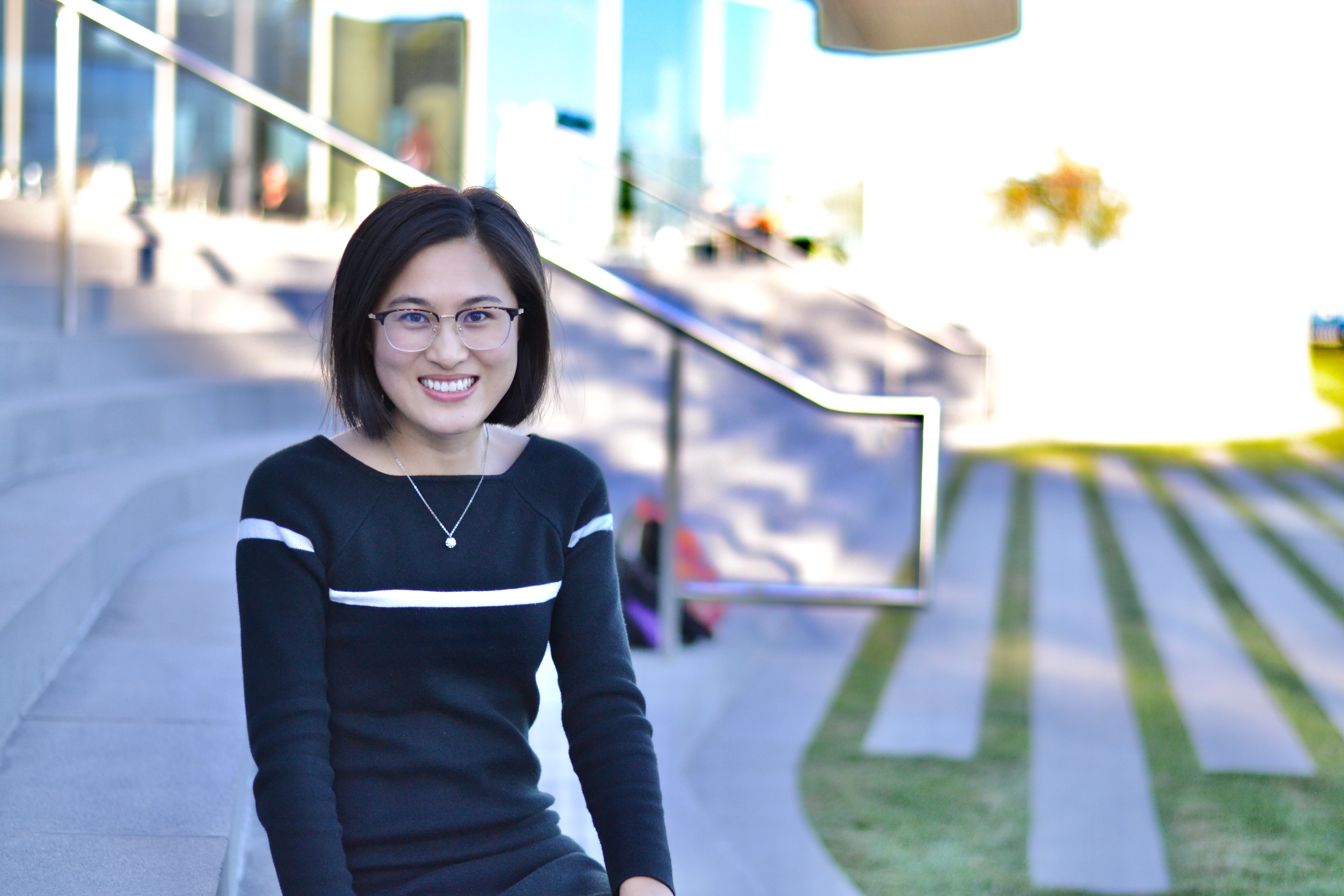Winners of "My Research in 180 Seconds"
Matthew Verosloff (Interdisciplinary Biological Sciences PhD Candidate) won 1st place for the "My Research in 180 Seconds" competition. Chenyang Li (Mechanics, Materials, and Structures PhD candidate) and Jiaxian Shen (Environmental Engineering PhD candidate) tied for the Audience Choice award. Check out their topics and transcripts below!
"Point of Care Diagnostics for Pathogen and Water Contaminants"
Matthew Verosloff
1st Place Winner
Abstract:
Accurate and accessible diagnostics for the multitudes of potential water contaminants are required worldwide for informed actionable decision making in terms of public health and distribution practices. Unfortunately, current diagnostic standards are costly, require technological expertise, and generally require a lengthy turnaround time. To successfully provide the necessary protection for at-risk individuals, our laboratory focuses on harnessing the power of the cell to develop affordable, robust, and user-friendly point-of-care (POC) diagnostics. By leveraging natural design principles, we have developed molecular biosensors capable of detecting an array of water contaminants simply by rehydrating with a drop of sample. These diagnostics can be produced at scale for cents on the dollar and require no to minimal peripheral equipment. All of our components can be freeze dried, dispensing with the need for an expensive and prohibitive cold supply chain. Currently we have demonstrated robust detection of several water contaminates including heavy metals, antibiotics, pesticides, viral pathogens, and bacterial species indicative of fecal contamination.
"Mars: A Better Place to Live?"
Chenyang Li
Audience Choice Winner
Transcript:
Last year the civil engineering department formed a team to participate in NASA’s 3D-Printed Habitat Challenge. The challenge is to build a 3D-printed habitat for deep space exploration and one of the most important target is Mars. For 3D printed construction on Earth, the material we used for printing is concrete. Concrete is made of cement, which is the binder, coarse and fine aggregates, which is the filler, water and different types of additives for different purposes. However, we don’t have cement and those additives on Mars and it is also hard to imagine we transport those materials to Mars, which is 40 million miles away. So, the alternative material we used for the challenge is sulfur concrete. Sulfur is abundant on Mars. By utilizing the phase change property of sulfur, if we mix sulfur with aggregate at 130C, the sulfur will melt. Once it cools down, the mix will harden and form the sulfur concrete which has certain strength. Instead of using the sand on earth as the aggregate, what we used for the challenge is the Martian Soil Simulant, which 93% chemically matches to the soil on Mars. We call the sulfur concrete with Martian Soil simulant Martian concrete or Marscrete.
As we know that the atmosphere and temperature on Mars are not ideal for human being to live. Then if we go back to my topic, why I’m saying Mars is a better place to live. The reason is that as a PhD student who studies the mechanics of materials, what I care about is the mechanical strength. Based on our experiments on Marscrete, we surprisingly found that the compressive strength of Marscrete is at the same level as the normal concrete. Do not forget that the normal concrete can be traced back to more than 3000 years ago and it has been developed by modern science for more than 200 years. The mix design and the additives of normal concrete have been optimized to achieve today’s strength. However, the strength of Marscrete we obtained is only based on preliminary test without any optimization. My research is to find out why Marscete has such high strength and whether we can further increase it. I think in the future, Mars might still not be an ideal place for people to live, but the structure on Mars might be stronger and safer. Thanks.
"Developing a Better Method for Risk Assessment of Antibiotic Resistance in Hospital Environment"
Jiaxian Shen
Audience Choice Winner
Transcript:
Hi I am Jiaxian Shen from Hartmann lab. My research is about hospital environment.
As we all know, hospital staff take care of patients in hospital. However, you should be careful not to come across another group of hospital staph. Super-bugs, like MRSA, may hide in a corner, waiting for people. According to center for disease control (CDC) and literature papers, around 5 and 15% of all patients develop at least one hospital-acquired infection. And 50 to 70% of them are caused by antimicrobial-resistant bacteria, making the diseases even more difficult to treat.
This tells us it is critical to know where these superbugs are hiding and how many of them are present so that we can effectively kill them and return a safe hospital environment, both to patients and to the true hospital staff.
Nowadays, the risk assessment method is changing from the conventional cultivation to sequencing based method. Because it has several advantages, such as
- Safer for experiment performers
- More High-throughput
However, it is not perfect yet.
- The current widely used sequencing method does not distinguish live pathogens with dead ones. And since the dead pathogens are no longer infectious, they do not pose a risk
- The samples from indoor hospital environment usually have extremely low biomass. It’s challenging to get a large enough signal-to-noise ratio from these samples.
So my research is to overcome these challenges and provide a better method for risk assessment.
- We incorporate PMA (propidium monoazide), a dye that can magically select for dead cells and bind to their DNA, thus allow us to detect only the viable microorganisms.
- We use sequential filtration to separate fungi, bacteria and virus. And in the meantime, we concentrate out target organisms and increase the signal-to-noise ratio.
3.We also optimize sample processing methods before sequencing to tailor this step for our organisms of interest.
Our goal is to make this already better method even better, as better detection of harmful pathogens leads to better control of infection, which means a safer hospital environment for everyone.
As the CDC Director, Dr. Frieden said, no one should get sick while trying to get well.
Thanks for listening!
